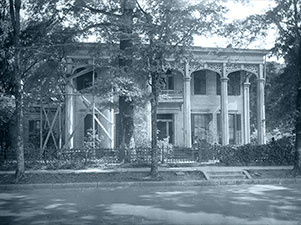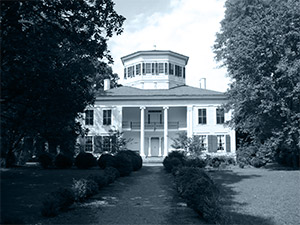
Weaver Place was built in the 1840's, and was the home of Frederick Tolbert Weaver. It has been listed on the National Register of Historic Places since 1978.
The building is allegedly haunted by Nellie Weaver, who died here in 1934, aged 80. It is claimed that she makes her presence felt to visitors.
In the 1950's, a pane of glass with Nellie's name etched into it was accidently broken. A replacement piece was fitted, and it was found that her name mysteriously had reappeared.
Pictured left is Weaver Place courtesy of James Butters.

Waverley is a former plantation house and now a historic house museum. It is situated in Clay County, ten miles east of West Point. Built in the 1840's, it is architecturally unique among Mississippi's antebellum mansions for its enormous octagonal cupola. It was declared a National Historic Landmark in 1973.
The building is allegedly haunted, and the phenomenon was brought to public attention in Haunted America (see below).
Effects included audible phenomena of a child's voice calling "Mama!", music and laughter. Apparitions include that of an Native American Indian riding a horse in the fields outside and a Confederate soldier that appears standing behind people when looking in a mirror (how unnerving!).
Pictured left is Waverley courtesy of Jeffrey Reed.




















































